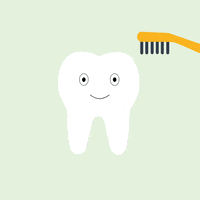Hydrogen peroxide - chemistry in everyday life
Everybody likes it, nobody notices it. A new currency besides the euro was created. In the Corona pandemic, nothing was more popular than toilet paper. But paper doesn't have the white sheen you can buy in the supermarket. Bleaching agents are needed for that. An excellent bleaching agent is hydrogen peroxide. It is environmentally friendly, non-toxic and versatile.
What is hydrogen peroxide?
Hydrogen peroxide is a colorless, clear liquid consisting of hydrogen H2 and oxygen O2. In the compound, it is chemically expressed as H2O2. However, it is a very unstable compound, as under natural conditions the reaction of hydrogen and oxygen is more commonly known as an oxyhydrogen reaction. Because of this, direct contact of hydrogen and oxygen must be avoided! By the way, this is also a very good example, why one should perhaps deal more critically with the topic of hydrogen heating and large-scale pipelines, as well as large-scale projects, from safety aspects.
So how is it produced?
There actually exists a large-scale direct contact process via electrolysis. Neither is it really profitable, nor does it find convincing industrial application.
Therefore, to avoid direct contact, a reaction carrier must be used. Anthraquinones are used for this purpose. They are loaded with hydrogen and oxygen in two independent chemical processes and finally washed out with water to produce an aqueous solution of hydrogen peroxide. This must be further processed for the purity of the clear end product.
Where is hydrogen peroxide used?
Important: When hydrogen peroxide is used, its decomposition is inevitable. This produces water and oxygen. The oxygen, in turn, can have a fire-promoting property.
In fact, hydrogen peroxide is a basic chemical in our modern way of life. It is predominantly used in the paper industry as a particularly environmentally friendly variant of bleaching agents. It replaces the former chlorine bleach in the majority of cases, thus protecting both people and the environment. As a result, it is also used in dentistry, especially in tooth whitening for your radiant smile.
It is also very versatile in water technology. It cleans organic impurities and kills bacterial pathogens.
Furthermore, it is also used as a disinfectant due to its disinfecting properties. However, this is only used in very low concentrations of up to 10%. The application of disinfectants is again very versatile and can be found, for example, in agriculture, medicine, biology, forensics and many other fields.
Who plays a decisive role in this?
In particular, there are 3 major notable producers in the industry. These are Solvay $SOLB (+0,39%) , Arkema $AKE (+2,64%) and Evonik $EVK (+1,32%) .
However, hardly anyone needs tons of loose containers, which is why in this area chemical dealers represent a large part of the customers, in addition to paper mills. Other companies listed on the stock exchange include Brenntag $BNR (+1,25%) and many other companies outside the capital market.
This is subject to the fact that large-scale mass concentrations are usually in the range between 50% and 70%. However, this is too much for general use, so that they are further diluted.
Where are the strengths of these divisions?
Hydrogen peroxide is anything but a niche. It is the basis for the production of many specialty chemicals, which is why the margins are above average for chemicals. Furthermore, it can be committed to sustainability, since the basic chemicals are hydrogen and oxygen. The range of applications is very broad and it is impossible to imagine a modern, hygienic society without them. The use of "green" hydrogen would therefore also result in "green" hydrogen peroxide".
The saturation of the production markets would hardly attract any further competitors into the market, so that the market is largely divided among the top dogs.
What are the weaknesses?
The production of hydrogen peroxide is always linked to hydrogen prices, which in turn are linked to natural gas. Corresponding burdens had to be borne in 2022 and were also evident from the balance sheets.
One has a relatively vulnerable import dependency, since the production of the working solution base materials takes place almost exclusively in India and China.
The weakening paper market in the wake of digitalization is forcing manufacturers to tap into new markets. The specialty market is particularly in demand, also due to the high margins of approx. 20%.
What is the current market situation?
Just yesterday, the VCI (German Chemical Industry Association) published its expectations for the full year. Overall, the chemical industry continues to suffer from persistently high raw material costs. Demand in general is conceivably weak. There is no recovery in sight for the time being.
This indicates that end consumers, i.e. us in the supermarket, are very hesitant. We are obviously no longer reaching for the more expensive products or preferring to take advantage of special offers. We must remember that, although we are talking about large-scale industry here, it can ultimately only earn its revenue from consumers. Uncertainty in our minds and our behavior is therefore causing the industry to suffer.
Therefore, please buy toilet paper, toothpastes and proper white paper, because I am invested in Arkema. 😂

